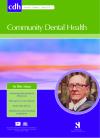Community Dental Health

- Cover Date:
- March 2013
- Print ISSN:
- 0265 539X
- Vol:
- 30
- Issue:
- 1
Dental Public Health in Action - Challenges encountered when conducting a dental health needs assessment of older people resident in care homes: experience from England
doi:10.1922/CDH_3112Shah04
This paper describes the process of undertaking a dental health needs assessment of older people resident in care homes in the North East of England and the challenges involved. It illustrates many competency areas of interest to dental public health practitioners: oral health surveillance, dental public health intelligence and collaborative working. Key words: needs assessment, residential facilities, dental health surveys
Initial Impetus
In England, there is a national rolling NHS Dental Epidemiology Programme. In recent years, Primary Care Trusts (PCTs), whose purpose is to develop health services for the community, have been able to extend beyond traditional child caries surveys as the national programme has allocated time specifically for this purpose. In the North East region, the Strategic Health Authority (the organisation responsible for defining and managing the overall health strategy in an area) dental commissioning group agreed that during the academic year 2010/11, the population group for scrutiny would be older people resident in care homes. The 2009 adult dental health survey (ADHS, NHS Information Centre, dental and eye care team, 2010) had collected data on the oral health needs of older people living in their own homes, but not in residential care homes. Therefore, it was agreed that a needs assessment would be required to assess whether the oral health needs of older people resident in care homes were different from their counterparts living in households, and whether these needs were being met. It was intended that this survey would: improve knowledge about the condition of the natural dentition and supporting tissues; investigate dental experiences, knowledge and attitudes towards dental care and self-care and assess the extent to which the oral health needs of this vulnerable group living in care homes were being met. The findings would be used to inform commissioning of services, particularly domiciliary care in the North East. NHS commissioners and local authorities (LAs, local government organisations) are keen to base their commissioning decisions on data relating to smaller geographic units than those sampled in the ADHS. The NHS North East survey, was therefore commissioned to ensure a sample size that would provide reliable and robust data on which to commission dental services at PCT / LA level.
- Article Price
- £15.00
- Institution Article Price
- £
- Page Start
- 6
- Page End
- 9
- Authors
- K.K. Shah, E.D. Tabari
Articles from this issue
- Title
- Pg. Start
- Pg. End
- Editorial - The British Association for the Study of Community Dentistry at forty: our professional project
- 2
- 4
- Dental Public Health in Action - Challenges encountered when conducting a dental health needs assessment of older people resident in care homes: experience from England
- 6
- 9
- Fluoridation and dental caries severity in young children treated under general anaesthesia: an analysis of treatment records in a 10-year case series
- 15
- 18
- Attitudes towards the use of fluorides for oral health among Islamic clerics in Kelantan Province, Malaysia
- 30
- 33
- The views of examiners on the use of intra-oral photographs to detect dental caries in epidemiological studies
- 34
- 38
- Caries experience and treatment need in adults with intellectual disabilities in two German regions
- 39
- 44
- Attitudes towards establishing a daily supervised school-based toothbrushing programme - determined by Q-sort methodology
- 45
- 51
